Simien Mountain
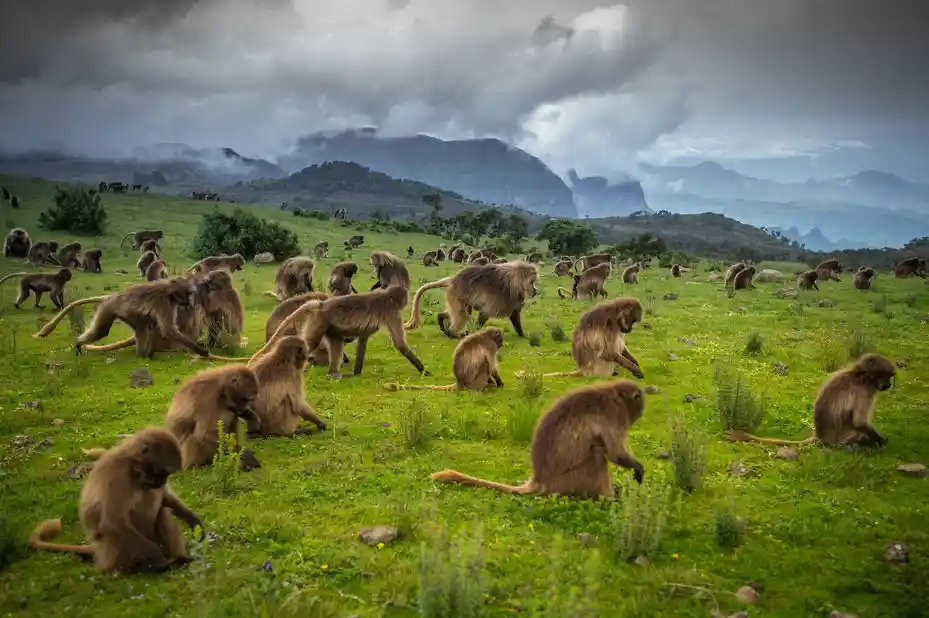
The Simien Mountains National Park was formally established in 1966. The park is endowed with unique landscape and endemic mammals and plants found nowhere else in the world and inscribed on the list of World Natural Heritage by UNESCO in 1978. It offers opportunities for mountain trekking, ecological studies and viewing life of the local people.
Location The park is located northwest of Ethiopia, in Amhara Regional State. Debark town, the headquater town of the national park is about 887km from Addis Ababa and about 102km from Gondar. It is 22km from Debark town to the park area. The national park is on the west side of the Simien Mountains and adjacent to Mt. Ras Dejen (Ras Dashen), the highest summit of Ethiopia and the fourth highest peak in Africa. It lies within the center of the triangle of important historical sites of Ethiopia, namely Axum, Gondar and Lalibela.
Climate
Though not far from the equator, the daily temperature ranges between a minimum of -5 Celsius and a maximum of 18 Celsius, generally an afro alpine characteristic. The northern part of Ethiopia has two distinct seasons; wet season and dry season. Wet season is 8 months from March to October and dry season is 4 months from November to February. In the wet season, June, July and August have heavy rainfalls. The best time for trekking in the Simien Mountains is after the heavy rain season from September to October. In October there is little rain. At this time all the area of the park is greener and more flower.
Species:
22 large, 13 small mammals, 57 tree species and variety of herbaceous plants, and about 180 bird species have been recorded. Spotting wildlife is not guaranteed. Nevertheless, with some luck you may see a number of species which appear to be endemic to Ethiopia and certain of these to the Simien Mountains area.
Fauna:
Flagship mammals are the Gelada Baboon(Theropithecus gelada), Walia Ibex(Capra Ibex Walia) , Ethiopian wolf(Canis Simiensis) and Menelik’s Bushbuck(Tragelegus Scriptus Menelik), which are endemic mammals. These species are mainly found on the escarpment and on the highland part of the park .
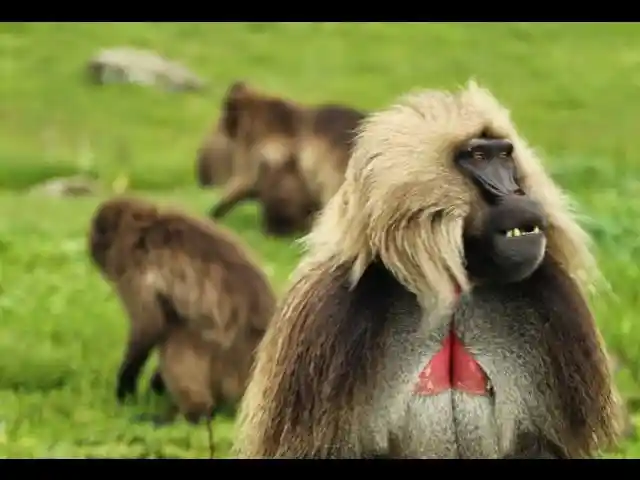
Gelada Baboon (Theropithecus gelada)
Gelaba Baboons are the most frequently observed mammal of the Simien Mountains National Park. Tourists can observe them up-close and learn about the primates by observing impressive socio- ecological aspects of the Gelada Baboons.
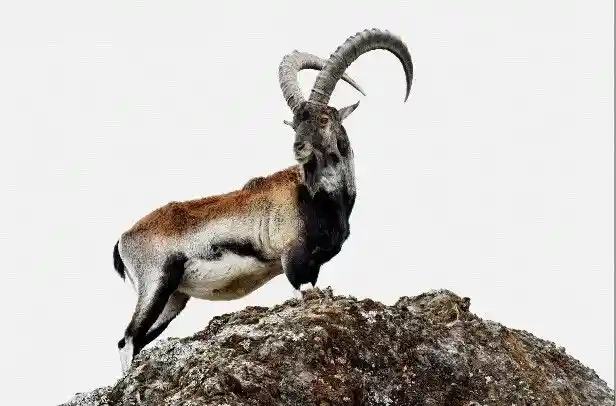
The Walia Ibex (Capra Ibex Walia)
The Walia Ibex is one of the most fascinating wild goats, which is endemic to the area. Simien Mountains are the southern-most limit of all species of ibexes in the world.
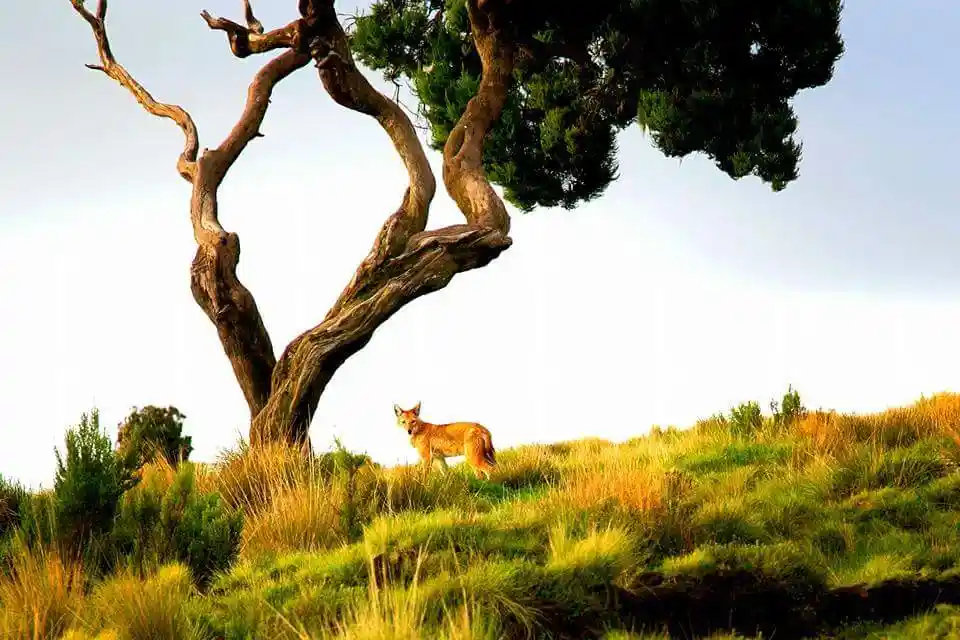
Ethiopian Wolf (Canis simensis)
For several years the species has been called Simien Fox, Red fox and Simien Jackal. However, recently, it was showed that the species has neither similarity with a fox nor with a jackal but close similality with the European Red Wolf. Thus, since the species is endemic to Ethiopia, the name Ethiopian Wolf was given.
There are also various species of larger animals such as leopard (Panthera pardus), wildcat, common jackal (Canis aureus), spotted hyena(Crocuta crocuta), bushbucks(Imbabala and Kéwel, common bushbuck and an endemic subspecies called Menelik’s bushbuck), klipspringer(Oreotragus oreotragus), black and white Colobus monkey(Piliocolobus), Anubis(Papio anubis) and Hamadryads baboons(Papio hamadryas). Moreover, considerable numbers of species of rodents such as white-tooth shrew, Ethiopian Narrow-headed rat(Stenocephalemys albocaudata) and unstriped grass rat (endemic to Ethiopia) are also conspicuous in different habitats of the park.
Bird life
The Simien Mountains National Park is one of the important bird areas in Ethiopia. Over 180 species of birds are recorded and few of them are endemic to Ethiopia. This richness of the birdlife implies the Simien Mountains National Park is a bird watcher’s paradise. Some of the birds that are frequently watched are the Lammergeyer, called also The Bearded Vulture (Gypaetus barbatus), White-backed Volture (Gyps africanus),Griffen Volture (Gyps fulvus), Lappet-faced Voltue (Torgos tracheliotos), Wattled Ibiss (Bostrychia carunculata),spotbrested proverb(endemic to ethiopia), Thick-billed Raven (Corvus crassirostris),fatailed raven,african cape rock,paid crow, Verreaux’s Eagle(Aquila verreauxii), Augur Buzzard (Buteo augur), Erckel’s Francolin (Pternistis erckelii), Ankober siren, the Vultures, Alpine chat(Cercomela sordida), Tacazze sunbird(Nectarinia tacazze) , etc. The most spectacular of these is the lammergeyer, a magnificent bird with a three meters wing span. The park also comprises important populations of spot-breasted plovers (on the highland such as Gich and Ambaras), white-winged cliff-chats, white collared pigeons(Columba albitorques), and Ruppell’s chat(Myrmecocihla Melaena) on the cliffs. Lower altitude has much diversity of birdlife than the highlands. Tourists interested in bird watching are expected to trek in the lowlands
- Spot-breasted Plover White-winged Cliffchat
- Lammergayer Augur Buzzards
- Abyssinian Groundhorn Bill
- Red Hot Poker Lobelia Globithistle Fig tree
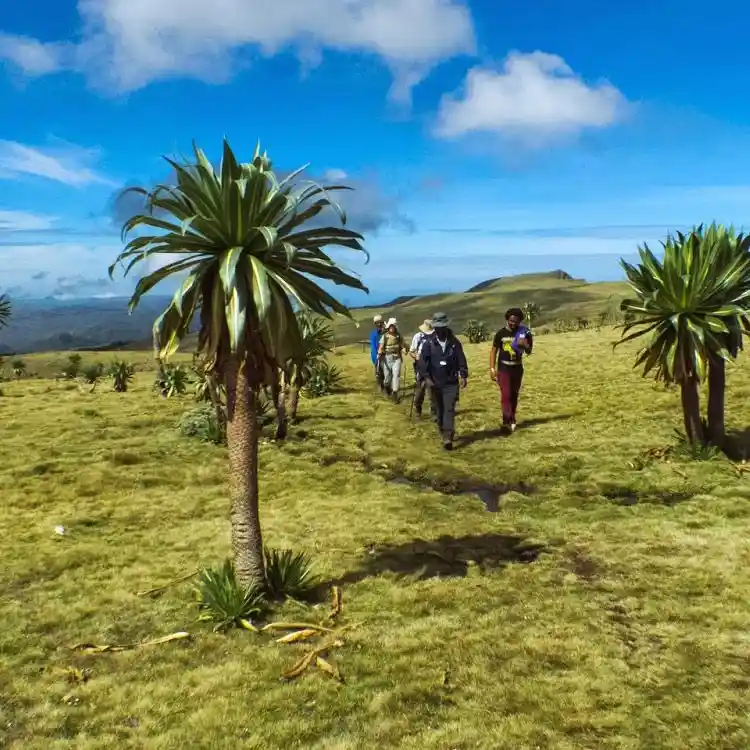
Flora
The variety of flora in the park is as diverse as the range of altitudes. Various species of herbs, grasses and trees are recorded in the park. The numerous flowers in the highland and forested areas of the Simien Mountains National Park are of photographers’ delight.
At levels above 3000masl the Afro alpine vegetation dominants the area. Here grass and herbaceous species are the dominant floristic composition. However, the superb landmark species is the Giant Lobelia. Other species include kniphofilia spp., Helichrysum citrispinum, Ranunculus oreophytus, Alchemilla species, etc.
At levels above 3000masl the Afro alpine vegetation dominants the area. Here grass and herbaceous species are the dominant floristic composition. However, the superb landmark species is the Giant Lobelia(Lobelia rhynchopetalum). Other species include kniphofilia spp., Helichrysum citrispinum, Ranunculus oreophytus, Alchemilla species,wildrosespecies, etc. The natural vegetation found in the Afro-montane areas (altitudes 2000-2700masl) include species such as Hagenia abyssinica, Schefflera abyssinica, Olea europea, Juniperus procera, Dombeya torrida, Albiza shimperiana, and many other species.
